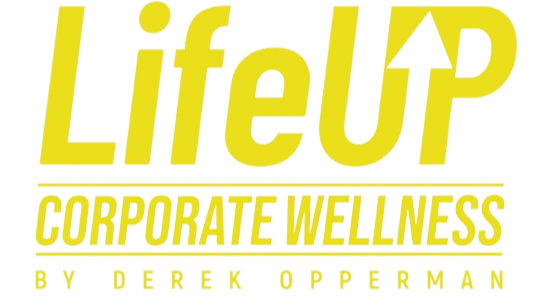
Today’s employees may span as many as five decades. Most companies have four generations in the workplace: Gen-Zs (emerging millennials), Millennials, Gen-Xers, and Boomers – each generation with similarities, but also unique characteristics and motivators. Understanding these is key when you’re considering ways to implement your employee well-being initiatives.
While those in each generation may agree they want to feel better, eat healthier, and live long, their views on what constitutes wellness and wellness delivery can differ quite widely. It’s worth examining what matters to each generation when developing your corporate wellness solution. Designing a wellness program that’s tailored to the needs of all your employees will make for higher efficiencies, lowered waste, and better overall health.
BOOMERS (ages 58-76)
Although Boomers are declining in the US workforce, they still represent almost a quarter of employees. They’re also responsible for the bulk of a business’ healthcare and claims costs. They are far more likely to trust doctors and least likely to Google healthcare advice than the three younger generations. Around 82% of Boomers regularly see primary care providers. The upside to this is that they are the generation most aware of their chronic conditions, which can go undiagnosed for a long time – especially among Millennials, who are far less inclined to visit a doctor. According to the CDC, both Boomers and Gen-Xers’ top health goal is weight loss, while Millennials favor more sleep and less stress.
How to cater to Boomers
When tailoring a corporate wellness solution for Boomers, it’s important to bear a few things in mind:
Face-to-face engagement
Among all generations, Boomers prize in-person learning, which makes them ideal candidates for seminars and lessons from trusted authorities like clinicians and wellness coaches.
Incorporate traditional communication
Yes, Boomers still pay attention to the paper, so don’t neglect that when you’re developing and publicizing any corporate wellness services. When conducting biometric testing as a baseline, make sure providers use multiple channels to provide results, including physical mail.
Underscore chronic condition management
Among all generations, Boomers are the most likely to have multiple chronic conditions – often the biggest contributors to your company’s healthcare spending. It’s important to remind them about routine chronic care and medications when needed.
Gen-Xers (ages 42-57)
As the “sandwich generation,” most Gen-Xers are chief health decision-makers for both teenage children and aging parents. This makes them true health activators. They are less trusting of authority than Boomers but are more likely to embrace primary care than Millennials. A recent study found that the average Gen Xer is out of range for three out of these five biomarkers: cholesterol, blood pressure, triglycerides, glucose, and BMI. This makes them great targets for reducing risk factors through developing healthier habits.
How to cater to Gen-Xers
When you design your health and wellness program for Gen-Xers, keep the following in mind:
Consider their workload
Because Gen-Xers taking care of both adolescents and aging parents are already overwhelmed by a busy schedule, they won’t be capable of following a complicated wellness plan. Keep it simple.
Think flexibility
It is best to provide any seminars or wellness sessions via video that Gen-Xers can access at any time. Provide opportunities for exercise during the workday.
Support top health goals
Like Boomers, Gen-Xers’ top health goals tend toward losing weight, increasing physical activity, and eating better. As they age, they are increasingly conscious of health habits and start to think about how to prevent cardiovascular disease, cancer, and diabetes. Generation X is more than twice as likely to be overweight or obese and have diabetes than Boomers were at the same age. Providing healthy snacks instead of donuts at meetings would be a good start. Dial up the emphasis on diabetes prevention.
Use their preferred method of communication
Gen Xers view email as the standard for communicating efficiently. So, if you’re trying to target Gen X, emailed health-related newsletters or announcements are a great option.
Millennials (ages 26 – 41)
Unlike the generations before them, Millennials see their physical health, emotional wellness, and professional lives as highly connected. A Millennial’s goal is to integrate all these facets into a healthy, manageable balance. Of all the generations, Millennials participate the most in workplace well-being programs. From hot yoga to juicing, Millennials are interested in all things health. They are not trustful of doctors, however; a recent study by Kantar Health and Greyhealth Group found only 41% of Millennials view doctors as the best source of health information. Instead, Millennials are more apt to seek information from websites like the Mayo Clinic or WebMD in order to help manage chronic conditions. A third of Millennials have not had an annual physical within the past year, and almost a quarter of Millennials have gone five years or more without a physical. This means they may be unaware of having treatable chronic conditions like high blood pressure.
How to cater to Millennials
There are several ways your employee well-being initiatives can engage and support your Millennial workers. Consider these ideas as you design your wellness program:
Go beyond diet and exercise
Promote a comprehensive definition of wellness that encompasses social, emotional, physical, and mental health. Millennials are eager to build healthy habits and have ongoing wellness, rather than focusing just on an acute health issue.
Encourage health autonomy
Millennials don’t want to be told how to be healthy; they want you to provide opportunities to be healthy. This generation values freedom of choice. When you give them options, they can exercise autonomy and take ownership of their own health – choosing the best path for their individual health journey.
Personalize through technology
Millennials like to use personalized apps that are tailored to specific health outcomes – think Fitbit for step counting, Headspace for stress reduction, and MyFitnessPal to track food intake. Consider ways of incorporating these types of technologies into health initiatives and wellness challenges.
Offer on-site fitness groups, health seminars, and nutrition courses
Compared with previous generations, Millennials are most likely to participate in workplace wellness offerings that cater to a broad definition of health, such as onsite clinics, healthy food options, online mental or physical health tracking, and mindfulness or relaxation training.
Make navigating the system easy
While they make up a significant portion of the US workforce, some Millennials are only just beginning to advocate for their own health. Your employee wellbeing initiatives should be easy to follow and information simple to understand. For health-related communications, Millennials prefer social media, instant messaging, and text.
GEN-Zers (aged 10 – 25)
The youngest members of your workforce like to define wellness for themselves as they carve a path forward. This generation above all others has played a large role in expanding definitions of wellness. To Gen-Zers, it’s more than okay to say when they’re not okay. They are comfortable verbalizing mental health struggles and asking for help and resources when they need them. And like Millennials, Gen-Zers don’t limit definitions of wellness to physical health. As the first generation to be seamlessly connected by social media and smartphones from an early age, Gen-Zers find themselves constantly communicating with friends, family, and colleagues. Compartmentalization can prove to be a challenge when they spend their days juggling demands from incoming text alerts and notifications. They naturally “get” interconnectedness and the art of balancing physical, mental, and social needs.
How to cater to Gen-Zers
Consider the following ways to support your youngest employers with workplace well-being programs:
Encourage primary care visits
Many Gen-Zers have not had a routine health checkup within the past five years or more, which means they often don’t have a good grasp of their baseline health metrics.
Move beyond exercise and nutrition
Gen-Zers are vigilant about mental health and the ways it impacts health overall. They are highly in touch with emotions. Gen-Zers see sound mental health as a holistic prerequisite for well-being. And they instinctively recognize that if they don’t nurture it, that neglect will surface as physical and behavioral issues. They’re particularly concerned about anxiety and stress, and access to mental health resources. Make sure your wellness programs include stress reduction. Promote the use of tracking apps for sleep, meditation, nutrition, and fitness.
Foster social health
Gen-Zers favor open communication, authenticity, and trust – bedrock aspects of social wellness. It’s one reason why, despite their constant connection with handheld devices, they like to have face-to-face communication. It lets them know whether you appear honest and sincere.
Use their preferred methods of communication
Gen-Zers’ attention span is around eight seconds. They are also highly visual. Use TikTok-style videos, and bite-sized written communications with scannable text, like bullets. Make internal communications multichannel, unambiguous, and concise. As well as face-to-face meetings, Gen-Zers mainly prefer to communicate through instant messages, text, and social media.
Bottom line
The way each generation views and consumes corporate wellness services differs considerably. Finding ways to manage health in a multi-generational workforce can be challenging, but your organization will also reap rewards. For one thing, leveraging generational differences helps to provide a sound talent pipeline. Besides that, healthier employees are happier, more productive, and require fewer health dollars. When you focus on building a multi-generational health program, it enables individuals of every age to fulfill their true potential.
Don’t forget – small steps like these can lead to sweeping organizational improvements for a company and all its generations. And remember, we are always here to help.
To your health!
Derek

